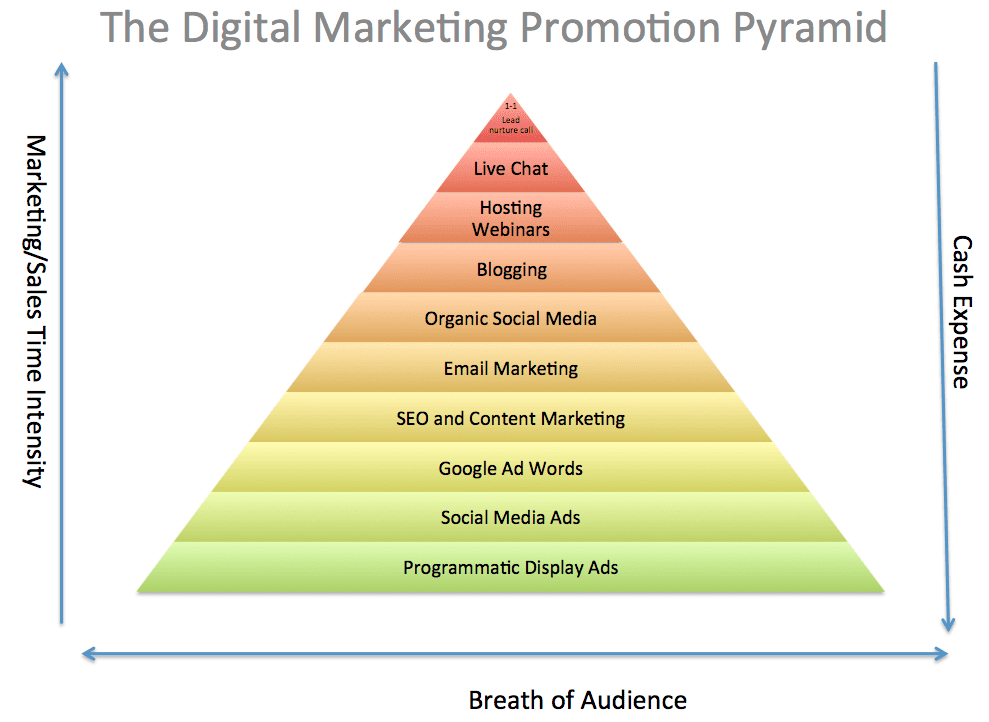Essential Marketing Strategy Models: The Promotion Pyramid
Tool for structuring thinking about one of the crucial 4Ps’ of marketing: Promotion McCarthy’s 4Ps of the Marketing Mix famously highlights 4 of the most crucial elements of marketing strategy: Price, Product, Place and Promotion. There is much discussion of the …..
Tool for structuring thinking about one of the crucial 4Ps’ of marketing: Promotion
McCarthy’s 4Ps of the Marketing Mix famously highlights 4 of the most crucial elements of marketing strategy: Price, Product, Place and Promotion. There is much discussion of the relevance of the 4Ps today which we cover here, but suffice to say we think these are still key strategy considerations for businesses of all scales.
Digital Marketing tactics often focus too narrowly on the ‘Promotional’ part of the 4Ps, as digital marketers have little influence over product development or the pricing strategy.
When thinking about promotion online, digital marketers all too often try to rush into starting campaigns without properly analyzing the merits of different tactics and channels. The resulting approach wastes resources in the long run because the lack of a proper strategy across the whole approach leads to becoming rushed and resources are miss-allocated.
One useful tool for thinking about promotion is the ‘The Promotion Pyramid‘ (Evans, 2013), which breaks down promotional techniques across 3 dimensions: cash expense (to external providers), marketing/sales time required (internal staff), and breadth of audience. Different Promotion Pyramids will look different for different industries, but we’ve developed this example of a promotion pyramid which will apply to many types of B2B trade marketing themselves online. Consultants might add a 1 on 1 meeting at the top of the pyramid, and B2B businesses may add industry events in the top half. It’s important to tweak this template to your businesses individual needs where necessary.
The promotion pyramid is useful when considering how to split your digital marketing budget between broad audience advertising, which is efficient in that it uses few internal resources and takes up little sales time, but is expensive, or use sales/marketing time intensive strategies such as blogging, webinars and sales calls which require a far smaller budget, but take up a large amount of internal resources and staff time. This internal staff time obviously also comes at a considerable cost to the business, so it’s important to get the right balance and not over rely on only a few tactics. When developing your budget and strategy for 2017, use this to structure your thinking and consider if you have developed a budget which is utilizing a wide mix of different tactics which can complement each other, or if you are currently overly-focused on just one area of the promotional pyramid.
Click on the image above to see an enlarged version.

